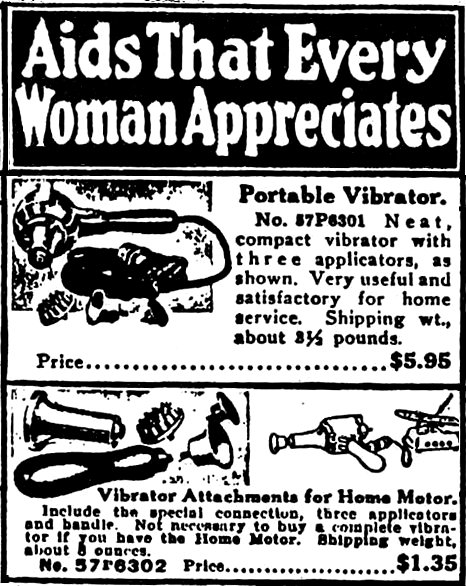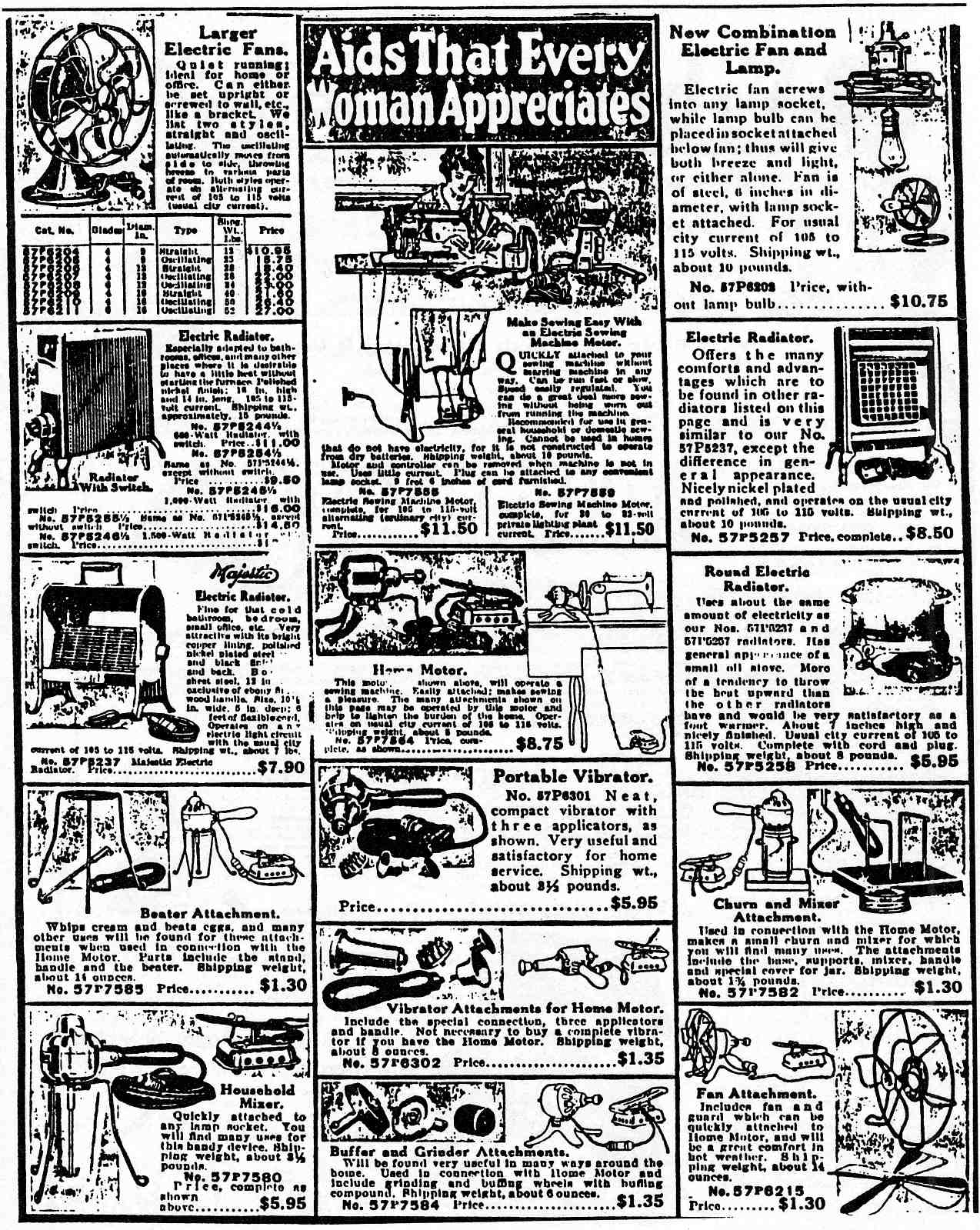Vibrators weren’t originally used for sex—physicians used them to treat hysteria during the Victorian Era. Hippocrates, an ancient Greek physician, defined hysteria as suffocation or madness of the womb.
George Beard, a physician, created a 75-page catalog of symptoms that could cause hysteria and the list was incomplete. It’s no wonder a quarter of women during this era were diagnosed with hysteria. Some symptoms included faintness, insomnia, muscle spasm, shortness of breath, and irritability. Women being sexually dissatisfied didn’t cross their minds as a cause of hysteria.
Hysteria generally affected those considered most civilized: white upper and middle class women. The upper class had higher education and lived luxuriously, which increased irritability in their nervous system and their chances of being diagnosed with hysteria. Working class women didn’t have luxuries; they had to work to survive.
 |
Close up of Sears catalog ad, 1915. |
Death wasn’t a result of hysteria, but women needed to receive constant treatment to subdue the symptoms. Doctors would give women a pelvis massage until she had a paroxysm, also known as an orgasm. This treatment method took time to reach a paroxysm, so Joseph Mortimer Granville created a device using electricity to conduct an alternate form of the treatment: the first vibrator. At first, vibrators were only available to doctors, but as home electricity became more popular, the vibrator became available to consumers.
This part of the Victorian Era has been making a buzz around the world. Sarah Ruhl’s play “In the Next Room, or the vibrator play” and director Tanya Wexler’s film “Hysteria” give their own spin on hysteria and examine the circumstances surrounding the invention of the vibrator. “Hysteria” comes out this May in the United States starring Maggie Gyllenhaal, Hugh Dancy, and Jonathan Pryce, and In the Next Room makes its Colorado premiere at the FAC Feb. 2-19.
Today, hysteria is no longer considered a confliction, but rather a myth. It was officially removed from the American Psychiatric Association in 1952.



